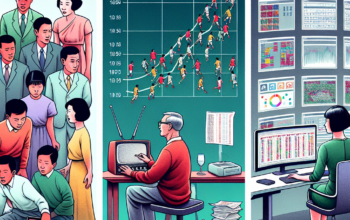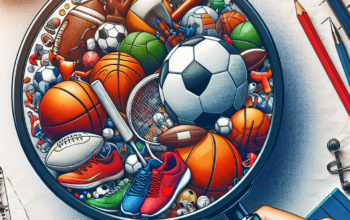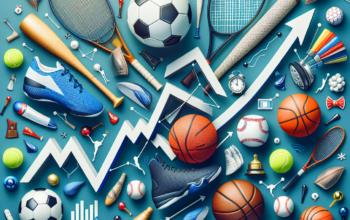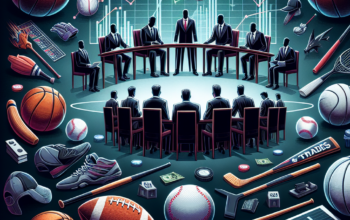Introduction
In the beautiful game of soccer, goals are not just about the scoreline—they embody teamwork, strategy, and chemistry. Fantastic team goals that showed true chemistry are often celebrated not only for their aesthetic nature but also for the synchronization and understanding displayed among players. In 2025, soccer continues to evolve, and teams are becoming increasingly adept at showcasing their unity through breathtaking goals. This article dives into the best examples of fantastic team goals this year, providing insights into how chemistry among players can lead to spectacular outcomes on the pitch.
Section 1: The Importance of Team Chemistry in Soccer
Team chemistry in soccer is a vital component that separates good teams from great ones. It refers to the intuitive understanding and bond between players that enable them to work together harmoniously. Teams that exhibit excellent chemistry often showcase an elevated level of play, seen through quick passes, smart movement off the ball, and the ability to anticipate each other’s actions. In 2025, this chemistry has been further amplified by advanced technologies such as data analytics and performance metrics, which allow coaches to tailor strategies that maximize player synergy.
A shining example of the importance of team chemistry is Manchester City, whose attacking prowess in 2025 has reached new heights, largely due to the strong relationships between their players. The fluid linking play often results in series of passes that cut through opposing defenses, leading to beautiful goals. The intangibles of chemistry—trust, communication, and shared goals—play an essential role in their gameplay, demonstrating why building a cohesive unit is paramount for success on the field.
Section 2: Analyzing Noteworthy Example Goals from 2025
Among the myriad stunning team goals scored in 2025, one of the most talked-about occurred during the UEFA Champions League quarter-finals between Bayern Munich and FC Barcelona. The German side executed a breathtaking series of quick one-touch passes that dismantled Barcelona’s defense in a matter of seconds. The synergy displayed by the Bayern players, particularly through the connection between Thomas Müller and Leroy Sané, epitomized true chemistry, as they seemed to be on the same wavelength throughout the sequence, culminating in a beautifully crafted goal that showcased their understanding of each other’s movements and strengths.
Another remarkable example came from the MLS, where LA Galaxy demonstrated their creative flair against Seattle Sounders. In a riveting encounter, they scored a goal which was the result of a fantastic interplay between their midfielders and forwards. The sequence started with a perfectly timed back heel from Chicharito, leading to a slick diagonal run by Raheem Edwards, followed by a precise cross into the box, where Dejan Joveljić finished with grace. This goal not only highlighted the individual skill of the players involved but also marked the culmination of extensive practice and an established bond that made them operate like a well-oiled machine.
Section 3: How Tactics Enhance Team Chemistry
Tactics play an integral role in enhancing team chemistry, especially in the modern game where formations and positional play dictate how teams approach matches. In 2025, many coaches are implementing fluid formations that stress positional interchange, relying on players being able to comprehend and adapt to the movement of teammates. For instance, the 4-3-3 formation employed by teams like Liverpool places a high premium on players developing mutual trust with each other to create overloads in midfield and attacking zones. This adaptability promotes quicker, cohesive movements that lead to opportunities for scoring.
The tactical integration of innovative pressing systems also brings about opportunities for fantastic team goals. The high-press style utilized by teams such as Tottenham Hotspur has seen players work tirelessly in tandem to regain possession quickly. Once possession is secured, the immediate understanding among players regarding space and timing becomes critical. Their 2025 victory over Arsenal featured a swift transition from defense to attack, where a rapid series of passes saw the ball move from the backline, through midfield, and into the forward line in mere seconds before resulting in a well-executed goal. This fluidity is a byproduct of meticulous tactical training focused on developing chemistry among players.
Moreover, the advent of technology has aided in analyzing the effectiveness of these tactics in creating chemistry. Through video analysis, teams can identify patterns in play that lead to successful team goals, allowing them to practice the same sequences until they become second nature. Coaches utilize this information to continuously refine their strategies and ensure that all players are aligned in their movements and decision-making during matches.
Section 4: The Psychological Aspect of Team Chemistry
The psychological component of team chemistry cannot be overlooked when examining fantastic team goals. Positive relationships among players foster an environment where creativity can flourish. A united team not only builds confidence but also encourages players to take risks, which is essential for creating scoring opportunities. In 2025, teams like Inter Milan have embraced psychological coaching to strengthen their bonds, leading to numerous moments of brilliance on the pitch. Their union was clearly evident in a crucial Serie A match against Juventus, where a perfectly executed team goal followed a sequence that began with a shared understanding of positioning, leading to a grand culmination of teamwork and skill.
On the flip side, undercurrents of tension within a team can stifle creativity and hinder performance. Disagreements or lack of trust can lead to missed opportunities, as players second-guess each other’s decisions. The importance of mental resilience and collective morale can thus directly influence the ability of a team to execute fantastic goals under pressure. Practicing visualization and camaraderie-building activities has become standard in the preparation for teams in leagues around the world, aiding players in developing stronger connections on and off the pitch.
Additionally, creating a culture that embraces mistakes as part of the learning process contributes to developing chemistry. Players who feel supported by their teammates are more inclined to experiment, which can lead to those jaw-dropping moments celebrated as fantastic team goals. The collaborative efforts seen among successful teams in 2025 reflect the significance of psychological readiness and mutual respect crucial to unlocking a team’s full potential.
Section 5: Future Trends in Team Chemistry and Goal Scoring
Looking ahead, the integration of artificial intelligence and machine learning into training could revolutionize team chemistry and goal scoring in soccer. By analyzing massive datasets, coaches will be better equipped to understand player behaviors in game scenarios and anticipate movements and patterns that enhance team dynamics. This technology can also identify which player combinations yield the most effective results, allowing for targeted training sessions focused on improving chemistry among specific player pairings. As this technology continues to develop in 2025, it will be interesting to see how it shapes the gameplay and the natural understanding that forms between players.
Furthermore, with an emphasis on youth academies, the cultivation of chemistry will start at earlier stages of a player’s career. Clubs are increasingly stressing the importance of nurturing young talents not just for their individual skills but also for their ability to work well within a team framework. As these young athletes rise through the ranks, their pre-developed chemistry could lead to higher quality interactions on the field when they transition to senior teams, ultimately enhancing the likelihood of scoring fantastic team goals.
Lastly, the global emphasis on the mental health of players will play an increasingly central role in fostering chemistry. Accumulating evidence suggests that athletes who manage their mental health effectively perform better as part of a cohesive group. As sporting organizations invest in mental health resources, we can expect to see teams become more unified, resulting in stunning performances and unforgettable team goals that crystallize the essence of soccer as a collective endeavor.
Conclusion
Fantastic team goals that showed true chemistry in 2025 not only demonstrate the importance of skill but also highlight the intricate relationships among players that make soccer a beautiful sport. Be it through psychological preparation, tactical advancements, or innovative technologies, the elements that facilitate an understanding between players are critical. Teams that harness and cultivate this chemistry will continue to deliver spectacular moments. As we look to the future of soccer, it will be exciting to witness how these evolving dynamics shape the next generation of unforgettable team goals.
FAQs
What are team goals in soccer?
Team goals in soccer refer to goals scored as a result of coordinated efforts by multiple players, showcasing teamwork, strategy, and chemistry. They often stem from sequences of passes or plays that highlight the understanding and connections among teammates.
Why does team chemistry matter in soccer?
Team chemistry is essential in soccer as it enhances collaboration, improves communication, and fosters trust among players, enabling them to work more effectively together, ultimately leading to better performance and more goals.
How do coaches develop team chemistry?
Coaches develop team chemistry through various strategies such as bonding activities, communication exercises, tactical drills, and team-building exercises. Fostering an environment that encourages mutual respect and understanding also plays a crucial role.
What recent examples demonstrate fantastic team goals?
In 2025, notable examples of fantastic team goals include Bayern Munich’s intricate passing against FC Barcelona and LA Galaxy’s stunning interplay that resulted in a goal against Seattle Sounders. Both instances showcased incredible teamwork and chemistry among the players involved.
How does technology influence team chemistry in soccer?
Technology, such as video analysis and performance metrics, allows coaches to identify successful player combinations and movements. By utilizing this information, teams can enhance their training sessions, ultimately improving team chemistry and performance on the pitch.












